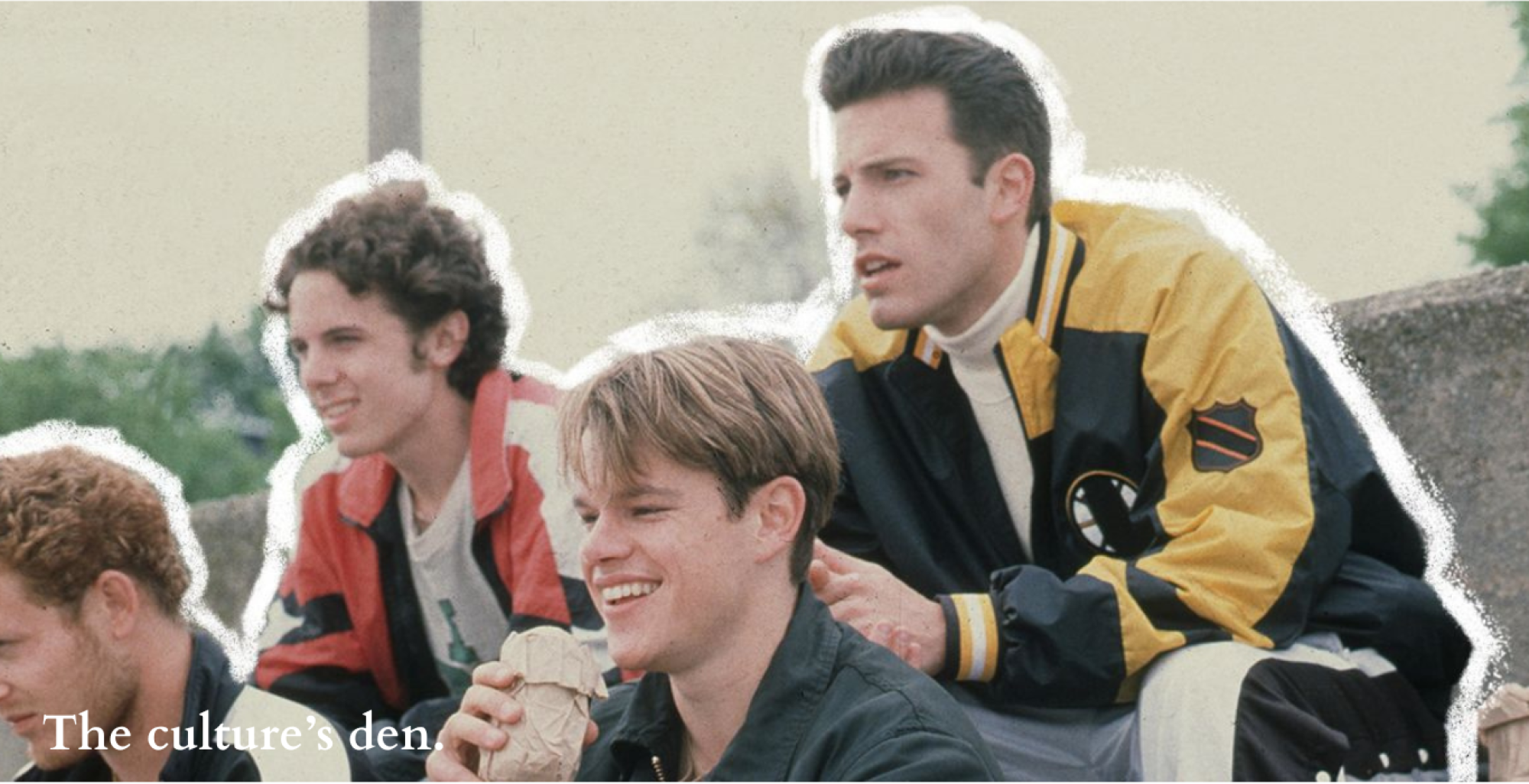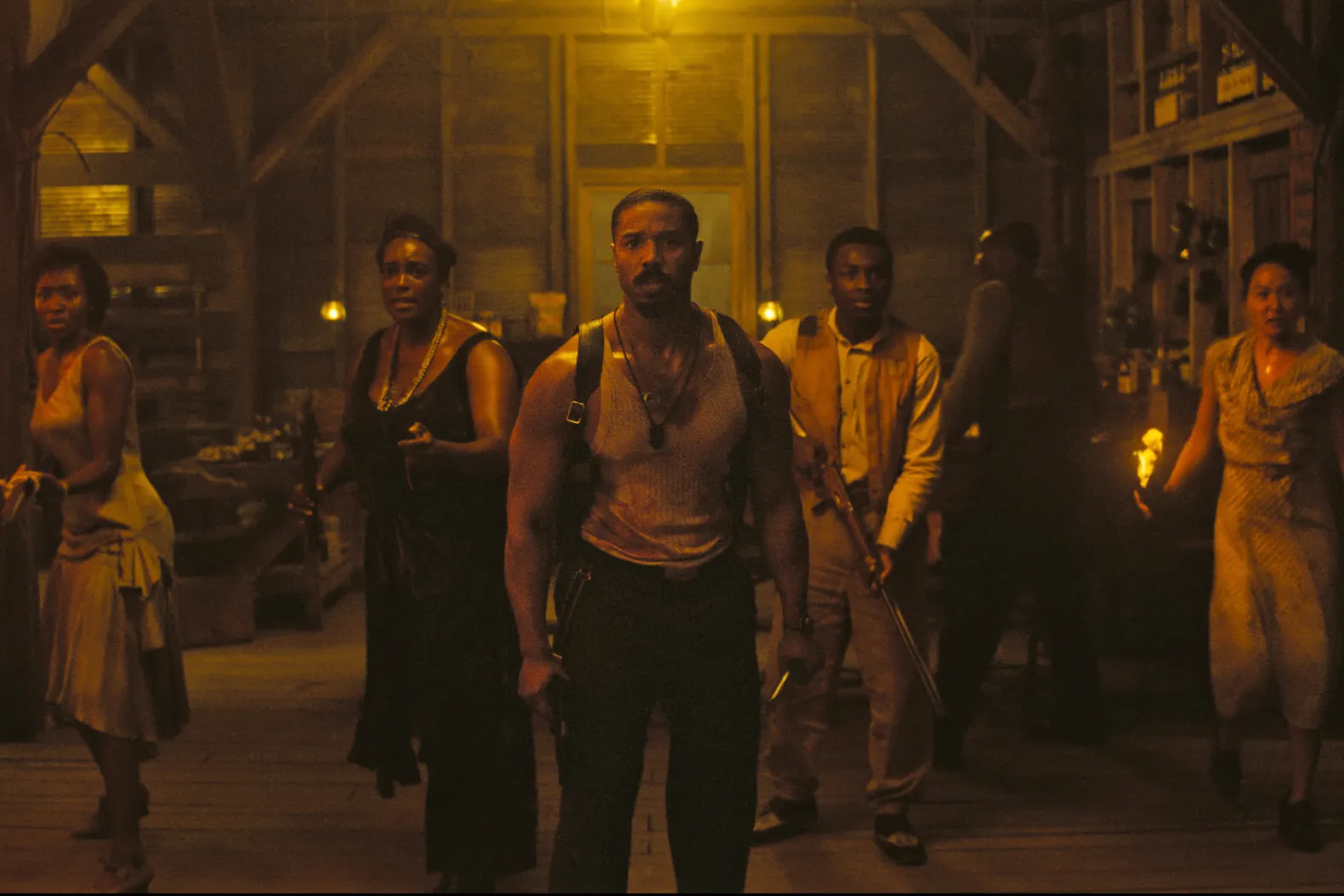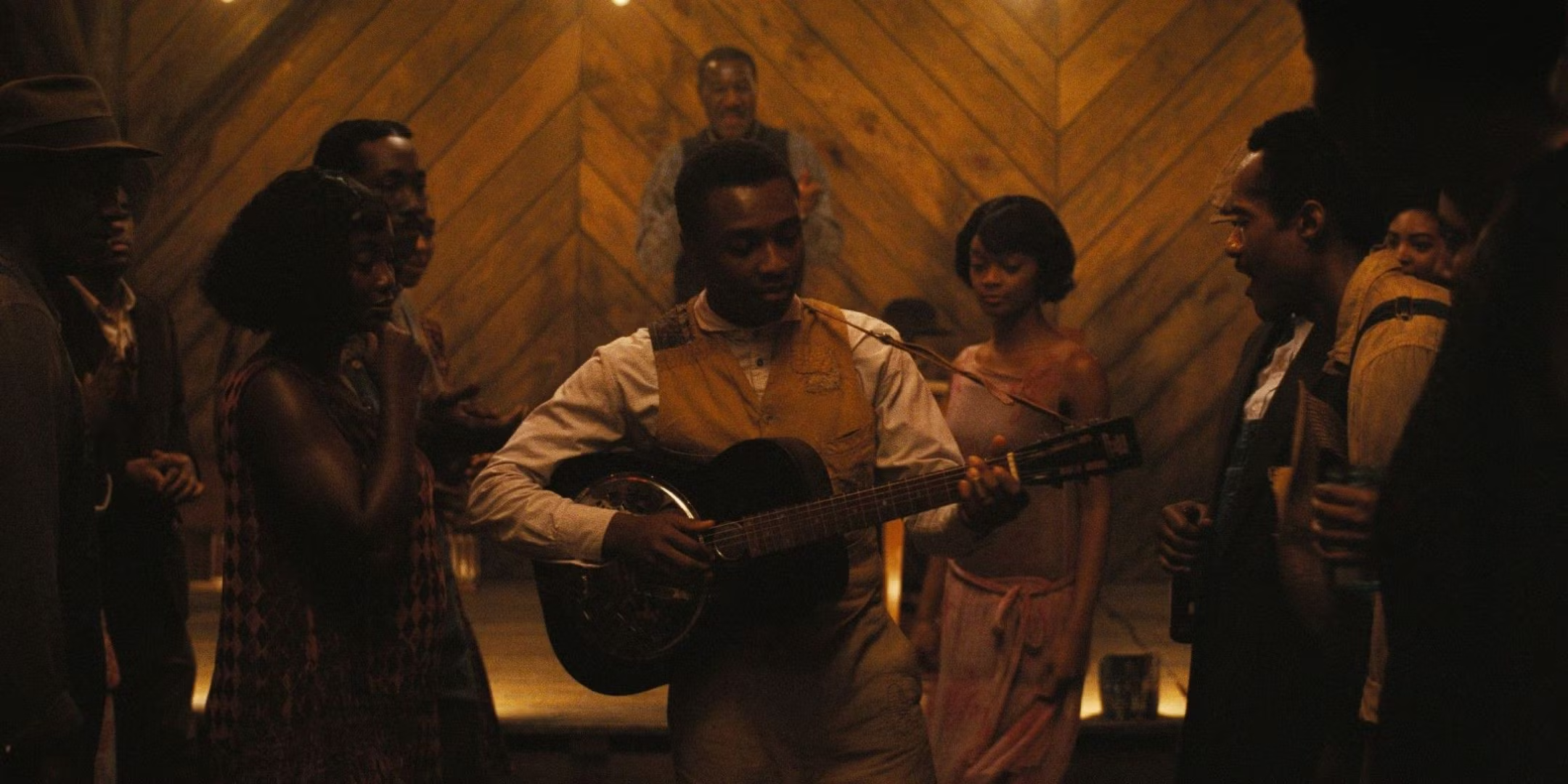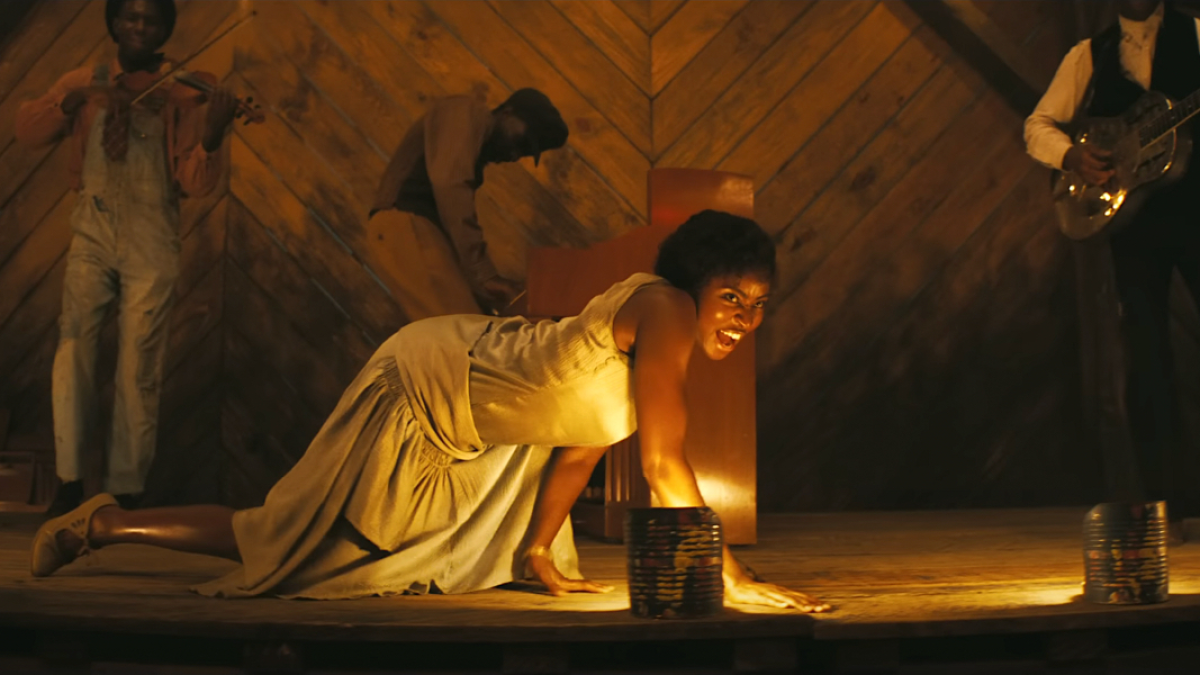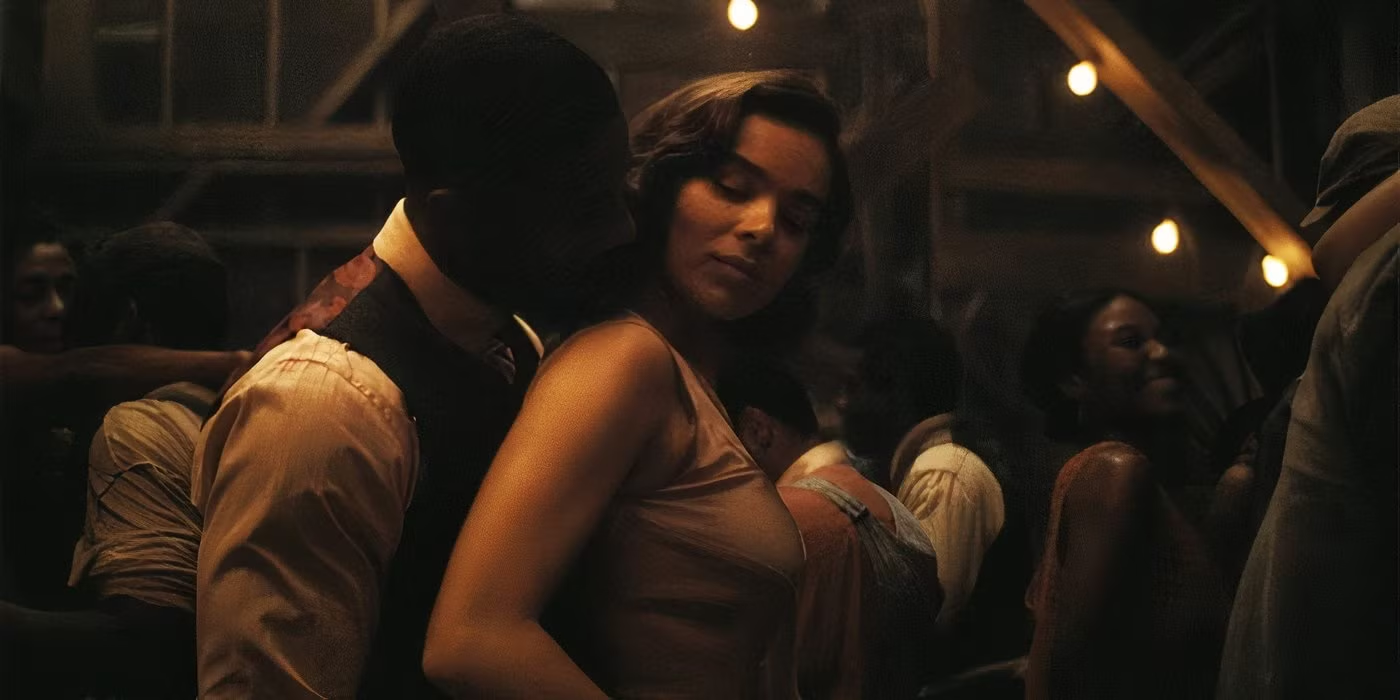
Between vampires, music and hemoglobin, Sinners lure you in theaters to play you the true song of its real message: a sinister and intoxicating blues of black America in the time of segregation. Through its talented cast (Michael B Jordan, Hailee Steinfield, Wunmi Mosaku, Jack O’Connel, Miles Caton…), the film celebrates African-American culture, the power of music (through blues) and denounces racism using urban folklore and horror genre in the background. You have some questions after the end of the movie ? Here is what you may have missed!
What is it about ?




Trying to start over, twin brothers Smock (Elijah) and Stack (Elias) return to their hometown, in the deep Mississippi, after making sudden fortune in Chicago. As they finally decide to turn to a virtuous path and invest in an honest business (a juke joint1 established in a former sawmill), an evil power awaits their return. Soon, the twins’ ambitious project puts them and their loved ones in trouble. They are all prisoners of the night and the evil that roams : a vampire drawn by the notes of blues.




Blues : a coveted treasure, bridge between life and death
Blues is a central element of the story, as it accompanies all stages of the plot, starting with the title of the movie. Sinners resonate with the term blues (abbreviated from “blue devils”) described as the music of the devil. But it is, in contradiction, through the character of Sammie (Miles Caton) aka Preacherboy, a young prodigy and son of a pastor, that we see all the meaning and scope of this musical style and everything it attracts, all the worst and all the best. First, his music attracts the enemy, who crave it and want to possess it as its own. But at the same time, it is able to gather and appease all hearts.


The moment Sammie sings “I lied to you”, for example, all the characters get closer to each other, making a truce with one another and dancing together and the danger that hovers outside seems insignificant. It is a moment of sharing where everything gets entangled, even time itself. Indeed, his interpreter opens a hypnotizing door between past, present and future. Together, blues, African music, rock and hip-hop mix in a mesmerizing mixture. We feel by ourselves all the inspirations of blues2 and all the musical genres that were inspired by it, in turn, in years to come.
… That belongs to no one

Remmick is not, however, the only threat to blues.
With more subtleties, Sammie’s father, a pastor, is also portrayed as an “enemy” as he tries to force his son (bearer of blues) to give up on his passion to dedicate himself to church singing. At the beginning of the movie, in fact, the horrifying images of the events of the previous day are superimposed on those of Sammie’s father, who urges him to give up his guitar. He, also, wants to keep his son’s music for himself and his ideologies.
We can understand that music, through the blues, must be shared to as many people as possible and is not meant to be chained.
The devil exists
If the Klu Klu Klan’s shadow weight into the background, the real “villain” of the story is Remmick (Jack O’Connel), a vampire of Irish origin who comes out of nowhere, but who seems to be attracted by blues.
The strength of this character is the fact that he identifies himself, in a certain way, with the black community of America. Indeed, his people have been colonized by the English3 for centuries and also consider music as an important part of their culture. Moreover, throughout the movie, Remmick evokes a lot the notion of “family” and “rescue”, showing that he can connect, through injustice and oppression, with the characters. Once attracted by blues, he defends his motivation with his philosophy : forming a large family in which there would be neither prejudice nor racism. Does he want to own his victims’ blues, a genre that has been suppressed for so long before being used by the oppressor for entertainment? Does he embody the colon’s complex of the savior by wanting to save them ? Or is it both?
Vampires and their signification
Contrary to what we are used to seeing, vampires do not only exist in the western folk culture. On one side, we have the Dracula-style vampire with sharp teeth who only comes out at night. And on the African’s myth part4, humanoids or other creatures that possess their victims, very similar to vampires. There is no doubt, however, that both are feared, in Europe as much as in Africa.

But the antagonist in Sinners happens to be a white vampire, a character who tries to bite his victims (here, black) to “suck” their blood and put them under his domination. The meaning of the vampire, through Remmick, then recalls the situation that black characters live in the 30s : segregation. He is eager to aspire African-American music (by extension, their culture) and put his victims under his domination by forcing them an “ultimate” way to get out of their condition.
My thoughts
Sinners is not just a vampire and horror movie (besides, violence is neither overdone nor exaggerated).
The goal of the production was not so much to be seen as a drama and action movie, but rather to send a message. There is not the kind of length, for example, that one learns to appreciate and expects in a movie : relationships between characters only take place in the present (with relationships from the past only evoked at the detour of a conversation) we don’t really know where Remmick comes from (only his motives are underlined) and finally, the antagonist was defeated more easily than one might expect. Some will appreciate the dive into the heart of the subject without waffle, others (like me) will regret the lack of “detour”.

Artistic choice of the director? Ryan Coogler has chosen to combine these two elements (horror and vampires) to convey messages that were stronger than thrill, fear or nostalgia. The film highlights themes such as cultural appropriation and the importance of fighting to preserve one’s culture. Indeed, we witness, thanks to the characters, the heritage of African culture that the African-American community was able to continue, through dances, songs or myths.
Coogler’s vision also blends perfectly with the actors, all very well chosen, from the protagonist to the secondary characters: the pair of Michael B Jordan and his alchemy with two different actresses, the incredible voice of Miles Caton, Hailee Steinfield who stands out in a completely different genre, Jayme Lawson’s game of sensuality through Pearline, the strength of Annie carried by Wunmi Mosaku… Everyone convey the emotion that was required.
If you haven’t seen Sinners yet, this is your sign! It’s an original, poetic and sobering film.
References
- Juke joints were establishments created for the black community, very popular during the prohibition and racial segregation. These kind of place were a sort of refuge in which the black community could express themselves, drink, sing, dance and listen to blues without worrying (little or not at all) about the segregation rules established at the time. White people were also accepted, with some going there in secret. The “Ebony club” is an example of popular Juke joint during the segregationist period. They also welcomed whites in the 50s. ↩︎
- Blues is inspired by plantations working songs, African culture, church gospels, among other styles. ↩︎
- From 1541 to 1782, the English exercised royal, legislative and colonial authority over the Kingdom of Ireland. Ireland is even experiencing, later in the 1960s, a (spatial) segregation where Catholics and Protestants are divided. ↩︎
- In Ivory Coast, Togo and Ghana (in the Ashanti folklore), we speak of Asanbosam, a humanoid creature that most closely resembles western vampires. The Asanbosam is in some cultures associated with the Sasabonsam; others, on the contrary, describe the Sasabonsam as having wings similar to a bat making several meters of height.
In Togo and Ghana there is also the Adze, a creature that takes the form of a firefly and has its victims who become “sorcerers”
In Ashanti folklore, the Obayifo is a vampire controlled by a witch who feeds on children’s blood and destroys crops. ↩︎
